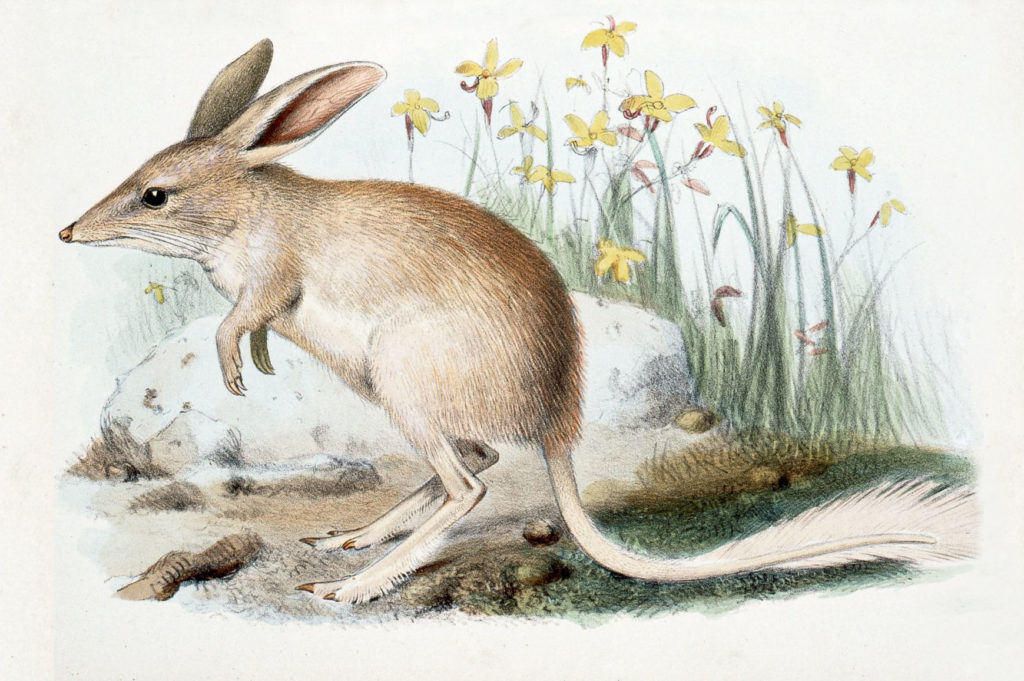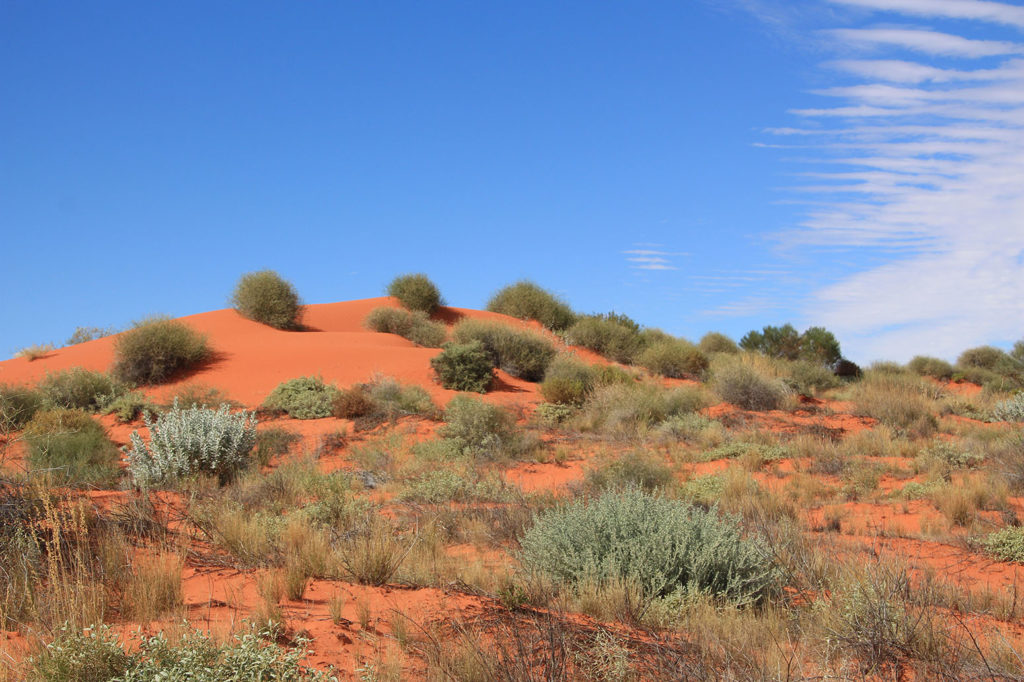The logo of Australian Wildlife Conservancy – the stylised profile of a Bilby – is a symbol of hope for wildlife: that’s what AWC is all about! But the design also carries a poignant reminder of the wave of extinctions that has ravaged Australia’s wildlife.

Until the second half of the twentieth century, Australian deserts were home to not one but two different types of Bilbies. One is the grey-furred animal with the black-and-white tail we’re familiar with today (Macrotis lagotis), sometimes called the Greater Bilby in reference to its larger size. The other (ungenerously dubbed the “Lesser Bilby”, Macrotis leucura), was smaller; with pale, silky, tan-grey fur and a completely white tail. This smaller Bilby was known as “Yallara” to the Wangkangurru people of the Munga-Thirri-Simpson Desert region.
In life, Yallara was a feisty animal. Hedley Finlayson, the scientist who collected the last known live specimens in the 1930’s, described how these animals:
‘… belied their delicate appearance by proving themselves fierce and intractable, and repulsed the most tactful attempts to handle them by repeated savage snapping bites and harsh hissing sounds, and one member of the party, who was persistent in his intentions, received a gash in the hand three quarters of an inch long from the canines of a male.’
Stomach contents reveal large quantities of fur from native rodents – Lesser Bilbies were nocturnal predators, and they probably hunted hopping mice and other small mammals. Like its larger cousin, Yallara dug burrows for shelter, but these differed in that they would close the entrance once inside.
 Neiste/Wikimedia Commons
Neiste/Wikimedia Commons
In the Great Sandy Desert and Gibson Desert regions of Western Australia, Lesser Bilbies survived well into the 20th century, within living memory of people interviewed in the 1980’s. Today around 22 specimens taken by European collectors sit in museums gathering dust, and the most recent physical evidence for the animal is a skull collected from underneath a Wedge-tailed Eagle nest at the edge of the Simpson Desert in 1967. With no confirmed records for over half a century, Yallara is presumed to be extinct, likely devastated by catastrophic pressure from introduced cats and foxes.
Immortalised in the logo of Australian Wildlife Conservancy, the Lesser Bilby reminds us of the precious biodiversity that has been lost from the Australian landscape. It serves as a stark reminder of the responsibility we share to ensure the great variety of wildlife that survives is given the best chance to flourish.
Learn more
AWC protects almost 10 percent of remaining Greater Bilbies at five significant feral predator-free sites, where wild populations have been successfully re-established.
The AWC sanctuaries – Scotia (NSW), Mt Gibson (WA), and Yookamurra (SA), as well as two NSW government partnership projects in the Pilliga and at Mallee Cliffs National Park, all lie within regions where Bilbies once thrived but are now locally-extinct.
Building on these successful reintroductions in feral predator-free areas, AWC plans to establish a new population at Newhaven Wildlife Sanctuary (NT) as part of a program to restore threatened species that have disappeared from central Australia. Within a decade, AWC properties are expected to protect an estimated 5,000 Bilbies.
Please help us prevent further Australian extinctions